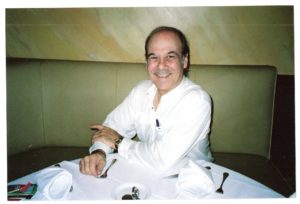A Special Moment In Time 1896: Miami’s Most Crucial Year
[AdSense-A]
There are certain years in certain cities that can be defined as “crucible” years, meaning that those years were either the single most important in and to the history of that particular town or city or one of several that fit that definition. Chicago, for example, will always be defined by the great world’s fairs of 1893 and 1933-34 as well as the years of the Chicago Railroad Fair of 1948-49. For New York it will be the great blizzard year of 1888, the world’s fairs of 1939-40 and 1964-65 and, of course 2001. Miami is another city that has had several crucible years including 1896, 1912, 1926 1941 and 1960, but, unquestionably, the single most important year for what would become one of the world’s greatest cities was 1896.
What happened in 1896 and why is and why should that year be considered the single most important year in the city’s history? The answer is simple: because in that year five important events would prove to be the most important in the formation and shaping of what would, just a few years after its founding, be called “The Magic City.”
The railroad construction crews of Henry Flagler’s renamed in September of 1895 Florida East Coast Railway were pushing steadily toward Biscayne Bay as ’95 came to an end, the result of the agreement reached by Mr. Flagler, Julia Tuttle and Mary and William Brickell whereby Tuttle and Brickell would donate half of their holdings (the former’s north of the river, the latter’s to the south, plus fifty acres given by Tuttle for the railroad’s shops and yards) to Flagler in exchange for his extending the railroad to the north bank of the Miami River and building one of his great hotels upon said bank., with the hotel’s construction well underway by mid-1895.
The year 1896 began quietly enough but on February 6th of that year a fellow by the name of Isidor Cohen would, for the first time, set foot in what would become Miami, a story which will be elaborated upon at a later date. Cohen’s arrival would prove to be a major asset to the yet-unborn city as in addition to his business acumen and his desire to see the city come to life, he was the first permanent Jewish settler to arrive on the shores of Biscayne Bay and his story is told in detail in L’Chaim! The History of the Jewish Community of Greater Miami, published by The History Press of Charleston and available in local book stores, at amazon.com or from The Bramson Archive, sbramson@bellsouth.net.
The second major occurrence of 1896 was the arrival of the Florida East Coast Railway on April 15th. Interestingly, while there were several well-wishers on hand, the crowd was surprisingly small. Among those in attendance were Mr. Flagler, his now famous in Florida history lieutenants, James E. Ingraham (for whom Miami’s Ingraham Building is named) and Joseph R. Parrott, Flagler’s railroad vice president, along with Mr. Cohen, who, in his 1923 self-published Memoirs and History of Miami, Florida describes Flagler, Ingraham and Parrott as “an odd lot.”
For a very short time, the station, a wooden building of very small proportions and looking somewhat like a shack, was opened on Avenue E at the intersection of what would become 12th Street, the numbers and letters being changed in 1921 so that, under the quadrant system of street numbering, Avenue D would become Miami Avenue, Avenue E Northwest First Avenue and 12th Street would be named Flagler Street.
After only a few months serving as the depot, the railroad moved the passenger and express operation to Sixth Street (the only street whose name or number remained the same after the 1921 renaming and re-numbering of streets and avenues in Myamuh under the Chaille Plan) just west of “The Boulevard” as what would become Biscayne Boulevard was named at the time.
The FEC’s trains would stop at the beautiful depot, then pull across Boulevard and unload or load passengers, baggage and express at the Florida East Coast Steamship Company’s dock (later renamed the Peninsular & Occidental Steamship Company, or “the P. & O.”, approximately where the American Airlines Arena is today.
That station served as Miami’s terminal until the opening of the Key West Extension in 1912 enabled trains to load and unload at the new station on the mainline (enroute to and from South Dade and Key West) at what would become number 200 Northwest First Avenue.
Very shortly after the arrival of that first train on April 15, 1896, the first excursion from the north (Jacksonville) was operated, that on May 11, 1896 and one can only imagine the wonderment and excitement of those traveling from Florida’s hub city all the way south on that train. Because all that remains in terms of documentation of that trip is the full page ad from the Jacksonville paper advertising said excursion, there is nothing else recorded regarding enroute comforts (dining, upper class seating or accommodations on-board) or the reactions of the passengers and extensive research has yet to uncover any further details. At any rate, and in any case, we do know that it was operated.
Next: Three remaining events add to the importance of 1896 as Miami’s crucible year.
[si-contact-form form=’2′]


